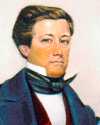
On 6 Sep 1811, James Melville Gilliss was born, the U.S. naval officer and astronomer who founded the Naval Observatory in Washington, D.C., the first U.S. observatory devoted entirely to research. When he started out, he taught himself astronomy, at a time when there was no fixed astronomical observatory in the U.S., and very little formal instruction. In 1838, he became officer-in-charge of the Depot of Charts and Instruments, forerunner of the U. S. Naval Observatory. Accurate star charts were essential for the navigation of ships, since they provided for the measurement of an observer's position. Upon his death, a Biographical Memoir of James Melville Gilliss was presented before the National Academy (1866). As you read it, you can reflect on the extensive, dedicated work required building up the body of knowledge for effective navigation at sea, long before GPS location finding was as available from the nearest cell phone. The name of Gilliss now goes mostly without recognition, but his work was of great significance in his era.
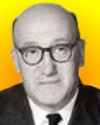
On 6 Sep 1908, Louis Essen was born, the English physicist who invented the first practical atomic clock, a device capable of measuring time more accurately than any previous clock. Now, precision time has become imbedded in modern activities. Today's book pick is: , by who picks up the history of time-keeping with astronomical methods, and ends with the GPS satellites which give nanosecond accuracy. With such a small time increment, compensation is required for the effects of special and general relativity. The largest part of the book deals with the development of time-keeping, and includes the story of the revolution brought about with atomic clocks, how they work, how more than 200 of them are used to form the world's time, and why we need leap seconds. No longer is time a function of the motion of the earth around the sun; physicists now define the second in terms of the fundamental properties of atoms.
It is available from Amazon, typically about (As of earlier time of writing - subject to change.)
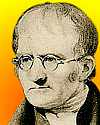 | Chemical analysis and synthesis go no farther than to the separation of particles one from another, and to their reunion. No new creation or destruction of matter is within the reach of chemical agency. We might as well attempt to introduce a new planet into the solar system, or to annihilate one already in existence, as to create or destroy a particle of hydrogen. |
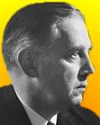 | The history of science has proved that fundamental research is the lifeblood of individual progress and that the ideas that lead to spectacular advances spring from it. |
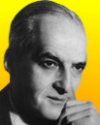 | I might paraphrase Churchill and say: never have I received so much for so little. [Exemplifying humility, upon accepting the Nobel Prize in Chemistry.] |
| Before you look at today's web page, see if you can answer some of these questions about the events that happened on this day. Some of the names are very familiar. Others will likely stump you. Tickle your curiosity with these questions, then check your answers on today's web page. | |
| Births | |
 | Louis Essen, born 6 Sep 1908, invented the first practical atomic clock. He built a atomic-beam clock utilizing the natural frequencies of an atom that are inherently stable over time and space to greatly increase the accuracy of time-keeping. The atoms of which element were used in Essen's atomic clock? |
 | On 6 Sep 1766, John Dalton, a giant in the history of chemistry was born - an English scientist, known as one of the fathers of modern physical science. What was his notable contribution to chemistry? |
| Deaths | |
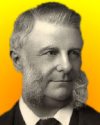 | Sir Frederick Abel (1827-1902) was an English chemist and military explosives specialist who co-invented cordite (1889) to replace gunpowder in weapons What was the advantage of cordite over gunpowder? |
 | On 6 Sep 1970, Arthur Herrington died, an American engineer and manufacturer who developed a series of military vehicles. His best known served various functions in World War II, including as a litterbearer, machine gun firing mount, reconnaissance vehicle, pickup truck, front line limousine, ammo bearer, wire-layer and taxi. What was this vehicle? |
| Events | |
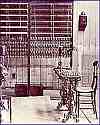 | On 6 Sep of a certain year, the first British telephone exchange opened in Lombard Street, London. What was the decade of this event? |
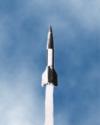 | On 6 Sep 1947, the aircraft-carrier Midway became the first U.S. vessel from which a long-range rocket was launched. It was fired from the flight deck from a position at sea several hundred miles of the east coast of the U.S. the rocket travelled about 6 miles. However, the rocket being observed was not American-made. Why was the rocket used for the first U.S. vessel launch not American-made? |
Fast answers for the previous newsletter for September 5: canal rays • Euclid • suicide • anthropology • decade of 1887 • estimated seven miles.
 If you enjoy this newsletter, the website, or wish to offer encouragement or ideas, please send feedback by using your mail reader Reply button.
If you enjoy this newsletter, the website, or wish to offer encouragement or ideas, please send feedback by using your mail reader Reply button. Your click on a Facebook, StumbleUpon, or other social button on the site webpages is also a welcome sign of appreciation. Thank you for using them.
© This newsletter is copyright 2020 by todayinsci.com. Please respect the Webmaster's wishes and do not put copies online of the Newsletter — or any Today in Science History webpage. (If you already have done so, please remove them. Thank you.) Offline use in education is encouraged such as a printout on a bulletin board, or projected for classroom viewing. Online, descriptive links to our pages are welcomed, as these will provide a reader with the most recent revisions, additions and/or corrections of a webpage. For any other copyright questions, please contact the Webmaster by using your mail reader Reply button.
--
If you do not want to receive any more newsletters, Unsubscribe
To update your preferences and to unsubscribe visit this link
Executive Real Estate Business Class
-
"It was like a man with wings. It wasn't like anything you'd see on TV or in a monster movie." ...
About the publisher
Search This Blog
Blog Archive
-
▼
2020
(1542)
-
▼
September
(173)
- SCIENCE: Just how big is Everest?
- The Latest News from History News Network
- On This Day for September 30 - Munich Agreement si...
- We are called to return to our foundational values...
- Newsletter for Wednesday 30 September.
- They Killed His Wife And Left Him For Dead – Then ...
- TRAVEL: Telling new truths about America’s histori...
- Make learning fun with Nat Geo Kids magazine! Subs...
- On This Day for September 29 - British mandate in ...
- Newsletter for Tuesday 29 September.
- Special Edition: Dinosaurs come to life like never...
- September 29: On This Day in History
- HISTORY: America's most endangered historic sites
- New This Week on History News Network
- On This Day for September 28 - California “discove...
- Newsletter for Monday 28 September.
- September 28: On This Day in History
- FAMILY: What do I tell my kids about wildfires and...
- On This Day for September 27 - Norman Conquest beg...
- Newsletter for Sunday 27 September.
- September 27: The Rosetta Stone, E=mc² and Fear as...
- The Compass: Indonesia
- On This Day for September 26 - First televised U.S...
- Newsletter for Saturday 26 September.
- September 26: Frances Drake's Circumnavigation, th...
- CORONAVIRUS UPDATE: Is this the end of the office?
- PHOTOGRAPHY: They feed us. Now we see them.
- The assassination of Lord Mountbatten | Enola Holm...
- 39,500-Year-Old Cave Bear Discovered Perfectly Pre...
- On This Day for September 25 - Pacific Ocean sight...
- The Roundup Top Ten for September 25, 2020
- Newsletter for Friday 25 September.
- September 25: Battle of Stamford Bridge, Remote Co...
- ANIMALS: These mighty elephants find peace
- On This Day for September 24 - Federal troops sent...
- Newsletter for Thursday 24 September.
- Global cartels taking control of the world + HPA B...
- September 24: Decline of the Byzantine Empire, Ope...
- YOUR WEEKLY ESCAPE: America's oldest mystery
- SCIENCE: How to cope with a big death toll
- The Latest News from History News Network
- On This Day for September 23 - Neptune observed, J...
- Newsletter for Wednesday 23 September.
- September 23: Nintendo, the Start of Data Processi...
- TRAVEL: How will America’s state parks survive?
- Matching gift opportunity for Sumatran rhinos
- On This Day for September 22 - Solidarity formed, ...
- Newsletter for Tuesday 22 September.
- September 22: Salem Witch Trials, Iraq's Invasion ...
- HISTORY: Who can replace RBG?
- Feed their curiosity! Get Nat Geo Kids magazine fo...
- New This Week on History News Network
- On This Day for September 21 - Joseph Smith's visi...
- Newsletter for Monday 21 September.
- September 21: France, China and a Sheep Shearing R...
- FAMILY: Don’t tell your kids outdated stuff about ...
- On This Day for September 20 - Rome incorporated i...
- Pro-life is not Politics + Vickie Travis's message...
- Newsletter for Sunday 20 September.
- September 20: Attila the Hun, Magellan's Circumnav...
- The Compass: Chile
- Matching gift opportunity for Sumatran rhinos
- On This Day for September 19 - George Washington's...
- Newsletter for Saturday 19 September.
- CORONAVIRUS UPDATE: Young people are spreading the...
- September 19: 1st Country to Grant Women the Right...
- PHOTOGRAPHY: How to make dinos look new (CORRECTED)
- Quick Note: How to Save Videos by Downloading
- PHOTOGRAPHY: How to make dinos look new
- The Mayflower | Medieval spiders | Ancient Egypt f...
- When She Found Out Her Boyfriend Was A Serial Kill...
- The Roundup Top Ten from History News Network
- On This Day for September 18 - Mukden seized by Ja...
- Newsletter for Friday 18 September.
- "Truth Crushes Evil" + We're Winding down + What ...
- YOUR WEEKLY ESCAPE: The country that doesn't exist
- September 18: Great Fire of Moscow, the CIA and El...
- ANIMALS: How U.S. officials stopped the flying squ...
- Two New Podcasts From HISTORY
- Don't miss out: back to school savings for learner...
- On This Day for September 17 - Camp David Accords ...
- Newsletter for Thursday 17 September.
- September 17: Bloodiest Day in the American Civil ...
- SCIENCE: He found part of a one-of-a-kind dinosaur
- SPECIAL REPORT: How the West is primed to burn
- The Latest News from History News Network
- On This Day for September 16 - Mayflower's departu...
- Newsletter for Wednesday 16 September.
- September 16: French Abolish Slavery, Malaysia For...
- TRAVEL: Will slowing down help you get stronger?
- Special Report: How do we end this pandemic?
- On This Day for September 15 - Central Americans g...
- Newsletter for Tuesday 15 September.
- September 15: Darwin Reaches the Galapagos, Penici...
- HISTORY: How the U.S. battled catastrophic wildfir...
- BREAKING NEWS: Possible evidence of life found on ...
- Discover Remarkable Leaders With Nat Geo History M...
- On This Day for September 14 - Mexico City capture...
- New This Week on History News Network
- Newsletter for Monday 14 September.
-
▼
September
(173)
-
Blogroll
-
About
HistoryFact










0 comments:
Post a Comment